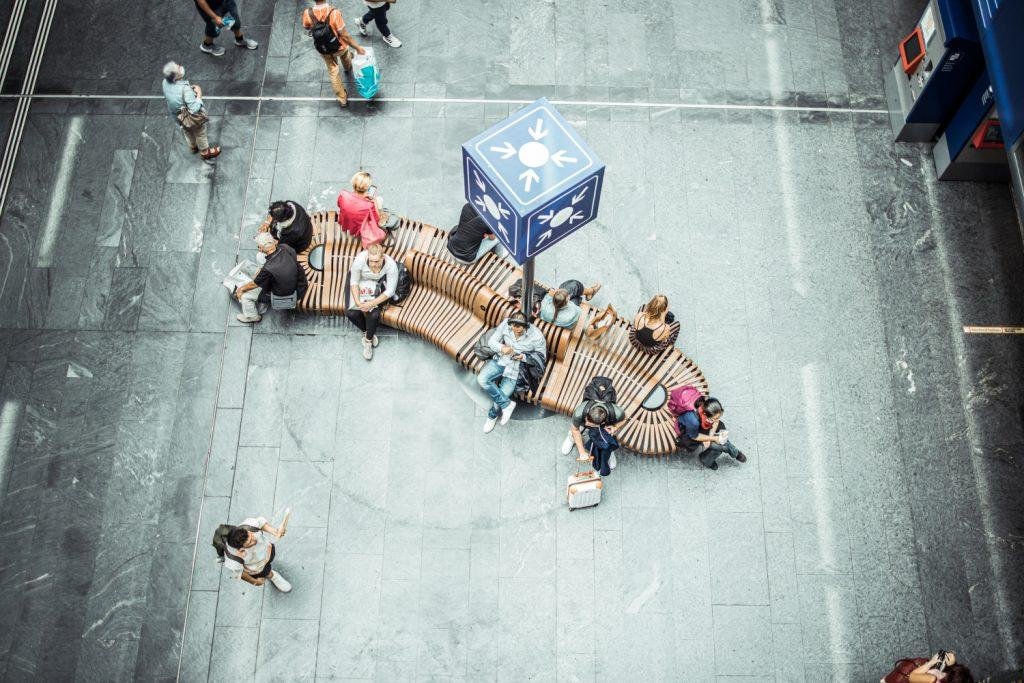“Placemaking is turning a public space from a place you can’t wait to get through, to one you never want to leave.” Fred Kent, Founder of Project for Public Spaces.
PLACEMAKING STARTS CONVERSATIONS, WHAT DOES IT MEAN?
“Placemaking” is everywhere these days and is much larger as we reimagine our public spaces following Covid 19 in design and urban planning. Perhaps a little explanation was required, we thought.
Placemaking is mostly the practice of transforming spaces into places, so let us first define spaces. Spaces have a shape and a purpose and represent the architect’s view. You want life, emotions, activities and memories to be filled. Spaces are abstract; they might be somewhere in a way.

THERE ARE MORE THINGS THAN SPACES Between PLACES.
Places are, in many respects, ‘more than’ spaces; they are about the human connection to a specific place, with a specific character and plot.
Places invite human connection. They are about individuals and community, a sense of pride in where and how we live. Places ask people to feel emotions and have experiences, with placemakers seeking to uplift and generate positive emotions. Placemaking tells the story of a place by including its unique history, local assets, character and culture.
Placemaking also deals with welfare, individuals as well as the environment. Sustainable and responsive architecture, biophily, and ecological modes are increasingly being focused by placemakers. Visitor welfare is a top priority for many public placemakers.

Places should be carefully crafted to return us to our senses and back to ourselves, including the concepts of multisensory attention. This means looking beyond the visual sense, through texture, tone, scent and taste (even though it is clean air), but also a sixth sense of ‘spirit of place,’ we all know that it feels amazing that we cannot always articulate it entirely.
The orientation inside and mobility around a position is a vital part of thoughtful architecture. Placemakers are looking for transparency, simple and intuitive movement and smooth interactions.
WELL-DESIGNED PUBLIC FURNITURE TELLS THE STORY OF A Place.
Furniture is an important part of placemaking because it can help to turn a’space’ into a ‘place.’ It can have architectural significance while still being responsive to the unique tale of the location in which it is located. Furniture has the ability to render a point. It can be one-of-a-kind, unexpected, and unforgettable, and it can help to improve the local character.
Placemaking furniture fosters interaction and enhances guest comfort. It recommends using space and living in place-specific ways, and it encourages personal knowledge. It may also serve as a cultural and community focal point, as well as an invitation to interact with others by providing seating, dining and meeting areas, and ways to get about.

The materials and methods used to produce furniture reveal much about the maker’s core principles and long-term dedication to the places they create. Furniture will spark discussions about biodiversity and environmental justice, which have an effect on location. This is also true of the projects, especially if the design language is built on ecological forms and natural, biophilic concepts for indoor and outdoor spaces, or for places like health care facilities that want to bring the outside in.
Placemaking furniture is often adaptable and versatile, taking into account both meaning and individual preference. Understanding that people’s interest’s shift over the course of a day, year, or the lifetime of a human public space is key to designing for placemaking.
PLACEMAKING WITH GREEN FURNITURE CONCEPT
Most public places or waiting rooms nowadays have countless long, grey lines of seating. There is no warmth, no welcome, and no sense of place; only a room like any other. Green Furniture Concept wished to contradict this idea of what a public space could be, and to build something more people-friendly, something for all to enjoy. An island in the middle of the city. A meeting place where people could chat, laugh, think, and network. A forum to connect with others. Creating meeting places that go beyond spatiality to provide a sense of location, a sense of local character; inviting dialogue and establishing landmarks.
PEOPLE AND ENVIRONMENTAL WELLBEING
Nature is our inspiration at every point of the design and production process, as we are pioneers in timeless environmental design and biophilic furniture, placing people and the earth first.
The organic forms and natural materials, together with the differences in tone and texture, create an ease of use and movement, as well as a relaxed, mindful setting. They are suitable for waiting rooms, but have a broader scope of placemaking for overall wellness. The materials and finishes are often chosen with the visitor’s wellbeing and enjoyment in mind.
ESTABLISHING Exclusive COMMUNITIES
Green Furniture Philosophy promotes community building by constructing public benches with shapes that encourage physical activity and open dialogue. Lines flow and curl, allowing for ease of contact and relaxing.
Recognizing the role of simplicity and individuality in placemaking, the architecture is modular and adaptable; architects are incorporating this into their architectural toolbox when constructing public spaces. Context is important. Airport lounges or stations can be overwhelming, with all of the tiredness and elevated feelings from a thousand separate journeys necessitating rest stops and a sense of peace. Schools, on the other hand, require inclusive seating and meeting places to help shy students gain trust and form classes.
PARTICIPATE Throughout THE CONVERSATION
Finally, placemaking is about bringing together a group of imaginative people to share a unique story. Green is an important member of such a team, transforming spaces into places by bold declarations in furniture design.




